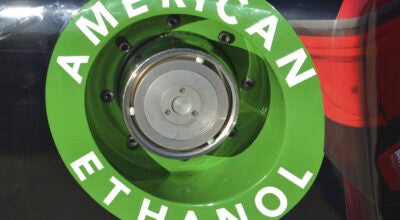COVID-19 housing assistance program has over $30M in requests to cover in first month
Published 8:00 pm Friday, October 2, 2020
|
Getting your Trinity Audio player ready...
|
Thursday was the first of the month and rent and mortgage payments were once again due. As housing bills pile up for those affected by the economic downturn, many Minnesotans are applying for help from the state’s COVID-19 housing assistance program, which covers overdue housing payments for eligible applicants, according to a press release.
In mid-July, Gov. Tim Walz and Lt. Gov. Peggy Flanagan made $100 million available to cover overdue rent, mortgage and other housing-related bills to help people maintain their housing stability and prevent eviction and homelessness. The support comes from the Coronavirus Relief Fund, which was authorized by the federal Coronavirus Aid, Relief, and Economic Security (CARES) Act. The program will run until the funding is no longer available.
The COVID-19 pandemic has taken a toll on people’s health and financial stability, leaving thousands of Minnesotans unable to keep up with their housing payments, the release stated. Falling behind on rent, mortgage or other housing-related costs can jeopardize an individual or family’s housing stability.
“We recognize that it’s a huge stressor for households that are falling behind on their housing payments, so we’re working with local administrators to act as quickly as we can. We want families to know they can still apply for help,” said Housing Commissioner Jennifer Leimaile Ho. The program covers unpaid bills incurred on or after March 1.
Shellie Rowe, housing stability manager at Neighborhood House, a St. Paul administrator of the program for Ramsey County, spoke with an applicant whose daughter is ill with COVID-19 and is worried about her family’s overdue rent.
“My heart goes out to this family, but I was so happy to let them know their rent is not a problem and they can worry less about that piece of life right now,” she said.
“The stress, anxiety and uncertainty Minnesotans are experiencing is real,” said James Collins, director of 211 at Greater Twin Cities United Way, whose team fields calls from prospective applicants.
Data about housing assistance requests (as of Sept. 23)
More than 33,500 people have been screened for initial eligibility and produced more than 22,000 applications through phone, text and website connections.
211 United Way, the central intake and referral point for the program, has processed more than 16,400 phone screenings and received an additional 4,300 texts from individuals requesting housing assistance in the first month of the program.
As of Sept. 28, more than 33,500 people have been screened for initial eligibility, producing 22,000 applications initiated in the system with requests totaling $30.3 million of assistance. This number includes applications in process as well as the approved applications for which payments are underway or have been issued.
About half of the funds requested are for overdue rent and a quarter is for help with mortgages: 53% is for rental assistance, 26% for mortgage assistance, 14% for utility assistance and 7% for all other eligible expenses.
Minnesota Housing has disbursed approximately $10.3 million, which includes housing assistance disbursements to the grantees but also includes program administration for the housing administrators, 211 United Way for their central intake and referral work, and HousingLink for the technology system supporting the program.
As of September 23, 61% of the applicants are below 100% of federal poverty guidelines. To be eligible for the housing assistance, applicants must be below 300% of federal poverty guidelines. The program has a priority for households under 200% of Federal Poverty Levels.
Nearly a quarter of the applicants (24%) note they have experienced homelessness at some point. Eight percent of applicants report having previously been evicted.
In terms of race and ethnicity, 57% of applicants statewide are Black, indigenous and people of color (in the 7-county Metro it is 71%). Black, indigenous and people of color account for about 21% of the state’s population.
Applicants come from every county in the state, with 57% of applicants residing in the 7-county Metro and 43% in Greater Minnesota. Overall an estimated 54% of people live in the 7-County metro and 46% in Greater Minnesota.
Funds still available for people in need of housing assistance
For complete details on who is eligible to apply and what costs are covered by the program, visit www.211unitedway.org. Interested applicants may also call 211 (Toll Free 1-800-543-7709 or local 651-291-0211) or text MNRENT to 898-211 to learn more. People who have already applied but have incurred new housing payments they cannot pay are encouraged to call 211 to make an additional application and get connected to other critical community resources. For more information and frequently asked questions about the COVID-19 housing assistance program, visit www.mnhousing.gov.




